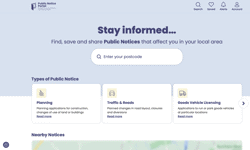Stuart Taylor, commercial director of Guardian News and Media, has left the newspaper industry after 18 years and moved on to commercial radio.
A case of a depressed and frustrated newspaper executive giving up and baling out of an industry that is, as some analysts think, inevitably doomed and that it is only a matter of time?
Far from it. As he leaves newspapers to become commercial director of the Guardian group’s growing radio interests, Taylor senses a growing sense of optimism both in the industry and in perceptions of it.
"Three or four years ago there was this: ‘Oh my God Google is going to kill us what are we going to do?’ No one is out of the woods yet and there is still some way to go. This market is changing but most people have a plan. There is a bit more confidence and a bit more positivity," insists Taylor.
Murdoch’s commitment
The Guardian executive told InCirculation he believes this is the year the mood in the industry has changed for the better, partly thanks to the activities of Rupert Murdoch, chairman of the News Corporation.
Murdoch, who has made more winning bets than losing ones in his long career, has made his commitment to newspapers in the UK manifest through a £650 million investment in new colour presses and the launch of thelondonpaper. And that was before the $5.6 billion purchase of Dow Jones, publishers of the Wall Street Journal.
And, far from fleeing a declining newspaper industry for the safety of commercial radio, Taylor sees significant parallels between the two "traditional" industries, both of which are facing significant challenges.
"There is a slight depressed feel about the radio industry because certain people are talking it down. But when you look at the fundamentals, people are listening to more radio than ever before," says Taylor.
He uses the analogy of property, applicable to both radio and newspapers. A particular Victorian street may not be particularly fashionable, but if the house is a solid Victorian property with strong foundations and a sound roof then it’s not about to fall down.
"Radio I think will enjoy a resurgence for the same reasons that newspapers are far from over. Radio and newspapers are facing similar issues but from a different perspective," says the Guardian executive who believes that newspapers can now teach radio something about the art of fighting back.
"There is a lack of confidence in radio and I think there is increasing confidence in newspapers," he believes.
Numbers game
Another small sign of the growing confidence in the newspaper industry came in the summer when the mood at a Mediatel seminar on the national newspaper industry was, according to Taylor, "quantifiably more positive."
It wasn’t just that speakers such as Stuart Taylor banged the drum effectively for newspapers. It could also be seen in the audience, many of them young media agency executives, as "depressing" numbers on circulation trends were put into a wider perspective.
The circulations of national newspapers had "plummeted" over the past decade by 16.5% with dailies down by 13% and Sundays down 17.5%. Some thought that, over 10 years, a fall of less than 2% a year amounted more to a gradual decline than a plummet.
Yet, despite all the emerging electronic competition, a remarkable 26.3 million people in the UK still read a national daily newspaper every week with 31.1 million on Sundays.
As Taylor told the seminar: "you have to say the resilience of these products is phenomenal given the explosion of choice and the behaviour changes of recent years."
Newspapers should be judged more on innovation and influence rather than the number of beans we have counted or had counted on our behalf, he argued.
Indeed, thanks to the internet, the liberal voice of the Guardian could now be heard all over the world and there were more people looking at its content in Los Angeles than in Birmingham.
As he crossed over from newspapers to radio, intrigued by the opportunity to learn about a different media industry, Stuart Taylor is in an ideal position to assess the current state of the newspaper industry – the progress that has been made and the work that still needs to be done.
Brands, not platforms
In an interview, Taylor said he wanted to see newspapers in future being regarded as brands addressing sectors of the market, rather than merely being part of an undifferentiated newspaper category.
"The agency world and the advertising world tend to pigeon-hole things into categories. That is how they work and get their efficiencies," says Taylor.
But consumer behaviour does not match such separate categories. The same person often reads newspaper websites, phone or text alerts and the paper itself.
And what the Guardian and thelondonpaper were trying to do were worlds apart, even though both were printed on paper.
A company like Guardian News and Media, which also publishes the Observer where Taylor began his newspaper career, has more in common, for instance, with Channel 4 or the BBC than, say, the Daily Mail.
"I am not talking content or political views but outlook on the world," explains Taylor.
One big lesson, he believes, has still to be learned by the newspaper industry. It has to be more open and collaborative with its customers - and that means both readers and advertisers.
Ironically, that lesson is being taught by the internet, a phenomenon that was once seen solely as a massive threat, and newspapers are learning important new tricks through their websites.
"It’s teaching us about accountability, it’s teaching us about immediacy, it’s teaching us about dialogue, community, conversation and not just monologue," argues the Guardian executive.
Media consumption
He also believes that much more work has to be done exploiting and learning from data that already exists on how individuals consume media throughout the day.
Predominantly, Taylor points out, people read papers in the morning before work and you are called a slacker if you read them at your desk. But you can go online and that can appear to be research. Newspapers then come back at lunchtime, followed by another burst of internet usage in the afternoon which tails off until newspapers peak again after work and in the evening.
The message is clear. Newspapers and online are "fantastically complementary."
But newspaper editors have to take on board the fact that as they edit a paper the night before, parts at least of it may not be read until the following evening.
"The smart papers will evolve to that model and understand that we are a reading product and not just a news product," Taylor explains.
It is precisely because newspapers are a reading product, and what he calls "experiential" that a recognisable publishing industry will survive whatever technology throws up in future.
Reading papers is something that people like to do, particularly at the weekends. It is up to publishers to make that experience as enriching and rewarding as possible.
"The qualities are wonderfully rich in content and nuance, language, photography and skill. They are wonderful things and I actually think the readers we talk to appreciate that," says Taylor.
For the moment, the Guardian executive emphasises, the newspaper product still personifies the brand, but a day will come when web content will become the central personality or brand.
"We are not there yet, but it could be that eventually the paper, or papers, are what we spin off a 24/7 (online) hub," predicted Stuart Taylor.
Better marketing needed
At the Mediatel seminar, despite the obvious difficulties of declining circulations, there was general agreement that newspapers were here to stay.
Simon Marquis, former publisher and media agency executive and now chairman of NRS, went so far as to predict that newspapers are going to be around "in colossal numbers even in our saturated market through most of our careers and most of our grandchildren’s careers as well. I can’t conceive of the circumstances in which newspapers will fall off the map."
There was, however, an important generic marketing task to be undertaken. Newspapers would have to sell themselves much better, particularly to a younger generation. But things move slowly. The case for a body that would promote the effectiveness of newspaper advertising was mooted as long ago as 1984 at a conference in Paris. Yet it took nearly 20 years for the Newspaper Marketing Agency to be created.
Jo Blake, the new head of press at the BLM agency, admitted at the seminar that, although she loved newspapers and enjoyed reading them, she had been guilty in the past with other agency people of giving out information on the marketplace that concentrated on falling circulations.
"I’ve done it myself, but don’t really talk about 26 million people reading a paper on a weekly basis, which is absolutely huge. We have to push newspapers to our clients and think about them in an upbeat optimistic way," she said.
The BLM executive also conceded that print buyers probably didn’t know as much as they should do about newspaper digital platforms.
There were also optimistic noises from Ian Clark, general manager of thelondonpaper. Circulations may have declined during the past ten years, but the decade had also been a time of "continual reinvention". Free newspapers had come from nowhere, for example, to account for 8% of total world newspaper circulation – 30% in Europe.
"I think we have some pretty exciting times ahead of us with new newspapers coming in, making a difference. I think we are going to see a lot of very encouraging figures going forward," said Clark.
And finally...
And a final thought from Stuart Taylor as he goes off to wrestle with the intractable problem of getting extra revenue out of digital radio channels.
Cover prices have essentially been flat against the retail price index since 2001 and will have to rise.
With the Sunday Times at £2 and decent magazines more than £4, Taylor believes "the £1 quality daily is not far away" and it would still represent "staggering value".
FEATURE
Better Mood music
On the face of it, the outlook for newspapers is little different now to what it was three or four years ago. Circulations were declining then, and they still declining now. Yet the mood in the industry is different. Wild eyed panic has been replaced with an almost serene like optimism. Ray Snoddy talks to Stuart Taylor and others about this change in mood.










